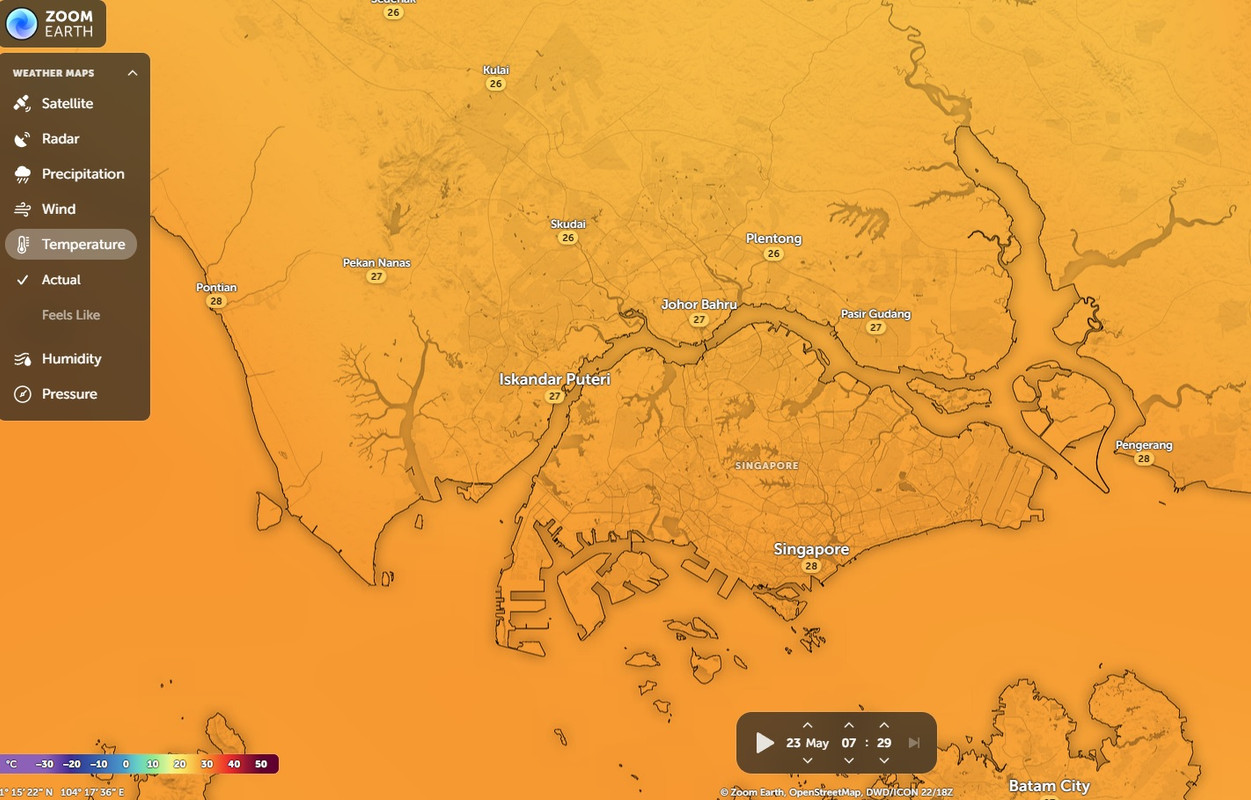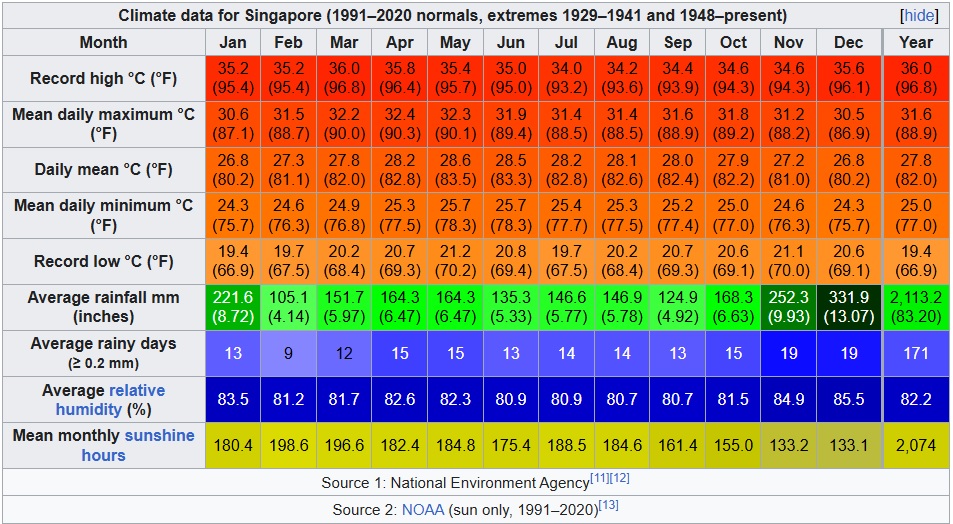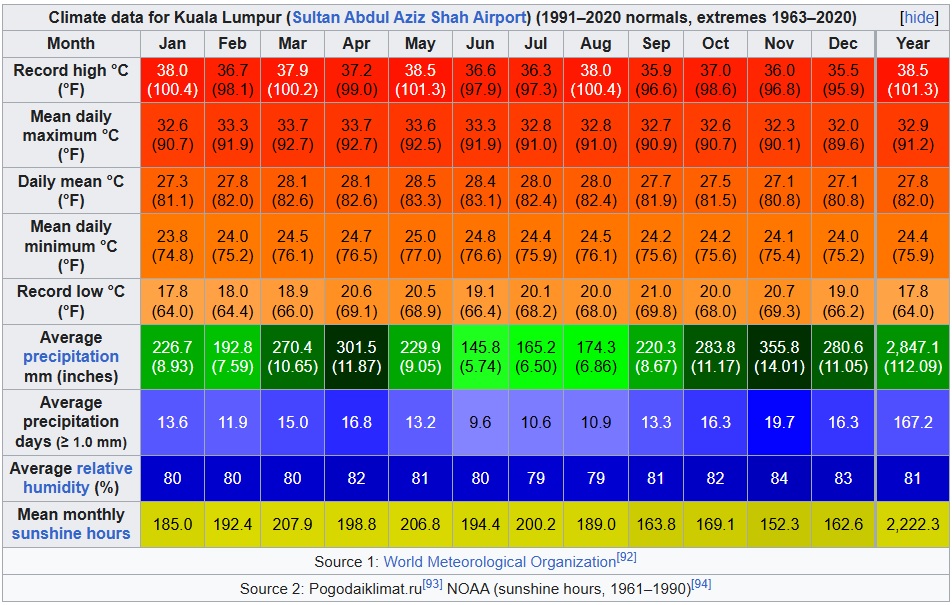And no if u are also wondering, the KL region had even less precipitation 24h earlier compared to Singapore in previous 24h.
And if you have the time to check the records using the link yourselves (tip: play with the day and time arrows), you will notice KL region tends to be cooler at the nights and early morning compared to Singapore even if both KL and Singapore were equally warm in the day time.
This is the well established urban heat island (UHI) effect that the official narrative of "sustainable growth amid climate change" has been largely ignored and downplayed.
.
https://zoom.earth/maps/temperature...65867,11z/date=2025-05-23,07:00,+8/model=icon
Very long term climate temperature records
Refer to the long term climate records. Singapore always had the same water body. Only the amount of "concrete" has changed over the decades.
------
AI Overview
Learn more
Water can indeed trap heat and contribute to the urban heat island (UHI) effect, especially at night, but it can also be a tool for mitigating the UHI effect during the day. While water bodies can provide cooling during the day through evaporation and heat absorption, their high heat capacity can lead to nighttime warming, releasing stored heat into the surrounding air. This can offset the cooling effect of urban green spaces and increase the UHI intensity.
Here's a more detailed explanation:
How water can trap heat and contribute to UHI:
- High heat capacity:
Water has a high heat capacity, meaning it can absorb a lot of heat energy without a significant change in temperature. During the day, water bodies absorb solar radiation and heat from the surrounding environment.
- Nocturnal warming:
At night, water releases this stored heat, warming the surrounding air. This can be unfavorable for nighttime cooling in urban areas, potentially increasing the UHI intensity.
- Increased humidity:
Evaporation from water bodies can also increase atmospheric humidity, which can exacerbate heat stress and discomfort, particularly during heat waves.
How water can also mitigate UHI:
- Evaporative cooling:
Water evaporates, which requires energy (heat) to change phase from liquid to gas. This cooling process can help lower air temperatures during the day, especially in humid environments.
- Heat absorption and storage:
Water bodies can absorb a large amount of heat energy from the surrounding environment, acting as a heat sink.
- Cooling effect on nearby areas:
The cooling effect of water can extend to surrounding areas, helping to create microclimates that are cooler than the rest of the urban area.
In summary:
Water can be a complex element in the urban heat island effect. While it can contribute to nighttime warming by releasing stored heat, it can also provide cooling during the day through evaporation and heat absorption. The net effect of water on the UHI depends on various factors, including the size and depth of the water body, the surrounding urban environment, and the time of day.






